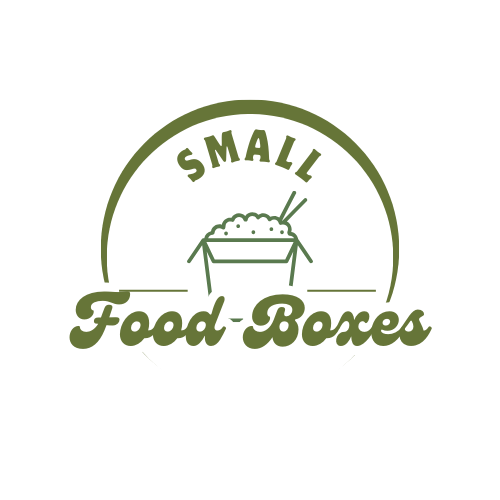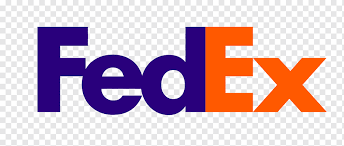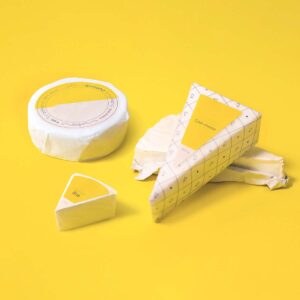Description
How Custom Taco Paper Improves Customer Experience
Why wrapping quality shapes the diner experience
A taco lives or dies by its first bite. If the wrap slips, leaks, or feels flimsy, the moment is spoiled before the food is tasted. Good paper manages heat, holds fillings in place, and keeps hands clean. It also signals care; when the wrap looks tidy and consistent, guests expect the food to match that standard. In quick-serve lines, food trucks, and pop-ups, the right sheet reduces chaos at the pass and shortens wait time for guests—an immediate win for service flow and perception. In the midst of this first impression, many operators pair branded wraps with coordinated packaging from small food boxes to keep the look and handling consistent.
Grip, cleanliness, and mess control
A sheet with the right dry strength and wet strength keeps sauces and oils from seeping through before the meal is finished. That little improvement saves napkins and avoids stained clothes and steering wheels. Guests notice when they can eat one-handed without dripping. For staff, a predictable wrap that folds cleanly makes assembly smoother and reduces rewraps.
Heat and texture preservation
Paper weight and coating influence how steam escapes. A sheet that allows controlled venting helps tortillas stay warm without turning soggy. Crisp edges on fried fillings last longer, and cooled ingredients don’t weep into the wrap. That balance—warm, intact, and easy to hold—sets the tone from first bite to last.
| Touchpoint | What changes with better paper | Guest impact | Team impact |
|---|---|---|---|
| First bite | Less slip, better grip | Cleaner hands, steady hold | Fewer napkin grabs |
| Transit | Oil stays contained | No leaks in bags or cars | Fewer complaints at pickup |
| Reheat window | Steam managed | Texture holds longer | Fewer rewraps during rush |
Custom Taco Paper as a brand and service tool
Custom print turns packaging into a quiet guide. The surface area of a taco sheet is prime space for logos, patterns, and cues that improve speed and accuracy. When the layout is intentional, it helps both teams and guests move through the meal in a calmer way. A subtle grid or repeat mark makes folds repeatable and neat, even in peak times.
Custom Food Printed Papers offer brands the chance to make every wrapper a brand touchpoint. Instead of a plain sheet, a printed design communicates style and purpose. It turns ordinary packaging into an extension of the dining experience.
Visual cues that boost recognition and photos
A repeating print, scaled for close-up shots, helps every grab-and-go meal look consistent on social feeds. High-contrast marks stay legible after contact with oil or steam. If you plan for photography, use a print that frames the taco—mid-size repeats, clear spacing, and enough white space so food remains the hero.
Clarity for staff and customers
Smart art solves real problems. Color stripes can code spice levels or protein types. Small icons near edges help staff spot the right order at a glance. Add a short allergen notice along one border so it stays visible without cluttering the main area. The result is fewer mix-ups, fewer remakes, and faster pass-through at the counter.
From material choice to measurable impact
Not all sheets are equal. Weight, fiber blend, barrier, and ink set the performance range. The goal is to match paper to menu: saucy tacos with rich fillings need higher grease hold; lighter, dry builds can use lighter sheets. When matched well, service moves faster and guests complain less, which shows up in reviews and repeat visits.
Material, barrier, and ink decisions
Basis weight affects tear resistance and fold memory. Grease-resistant barriers reduce lateral spread of oils, keeping the grip area clean. Food-safe, low-odor inks protect aroma while keeping color stable under heat and moisture. When wraps are paired with basket liners, align paper feel so the handling stays consistent from counter to table.
| Feature | Details | Material Options | Finishing Choices | Add-ons & Features | Usage / Application |
|---|---|---|---|---|---|
| Paper Weight (gsm) | 28–32 | Lightweight kraft or recycled sheets | Uncoated surface | Quick folding, easy tearing | Dry snacks, wraps, flatbreads |
| Grease Hold | Moderate protection | Natural fiber barrier | Unfinished texture | Limited grease resistance | Light fillings, low-sauce foods |
| Steam Control | Fast venting | Breathable paper | Standard matte surface | Quick steam release | Crisp sandwiches, thin rolls |
| Notes | Thin sheets for cost-efficient packaging | Low-gsm recycled stock | Basic paper touch | Light, compact storage | Ideal for everyday light use |
Sustainability signals guests understand
Guests notice simple, honest cues. Use clear disposal guidance—“Recycle where facilities exist” or “Dispose with general waste if contaminated.” If the paper includes recycled content or certified sources, print the claim near an edge with a short line about why it matters. Keep any stickers or windows minimal so the sheet can be handled like standard paper where possible.
Custom Printed Food Paper is one of the easiest ways to combine sustainability with branding. It not only wraps meals securely but also communicates eco-friendly values directly to customers. By adding your logo or message on recyclable paper, you send a clear signal that your business cares about both quality and the environment.
Operations gains that guests can feel
Speed and calm are part of customer experience. The right paper shortens assembly time, reduces napkin pulls, and keeps counters tidy. When the make line is steady, orders land together, tables turn smoothly, and guests wait less.
Faster prep and better portion discipline
A sheet with light fold guides or a subtle grid becomes a positioning aid. Teams place fillings consistently, fold in the same sequence, and get cleaner wraps on the first try. That discipline holds portion sizes steady, which protects margin while keeping guests satisfied with predictable builds.
Less waste and cleaner hand-offs
If a wrap tears during folding, everything slows down. Choosing a paper with balanced wet strength lowers rewraps and keeps the pass clear. The hand-off improves too: a firm, dry grip area leads to fewer dropped meals and fewer “extra napkins, please” moments at the window.
| Feature | Details | Material Options | Finishing Choices | Add-ons & Features | Usage/Application |
|---|---|---|---|---|---|
| Logo Size | 18–28 mm on repeat | N/A | N/A | Ensures logo visibility | Reads well in photos and handheld packaging |
| Line Weight | Medium strokes | Standard ink base | Matte or gloss inks | Prevents blur from steam/oils | Maintains clarity in food packaging printing |
| Edge Zones | 8–10 mm clear space | Recycled board | Coated or uncoated | Prevents ink distortion | Keeps artwork aligned after folding/creasing |
| Coding | Color bars or icons | Food-safe board | Spot UV or emboss | Easy product identification | Faster ID for proteins & spice levels |
| Minimum Order | Starting from 100 units | Kraft / SBS / Cardboard | Gloss, Matte, Soft-touch | Free design support | Bulk food packaging and branded takeaway |
Measuring what matters after rollout
Customer experience is not a guess. Track how paper changes service and satisfaction. Start with one store or one route, then expand after the numbers confirm gains.
Metrics worth tracking
Measure queue time, remake rate, napkin pulls per order, and guest comments tied to mess or heat. Watch food cost variance when portion placement becomes more consistent. Scan ratings and photo posts for mentions of neatness and ease of eating—small signals that reflect real improvements.
Feedback loops and pilot runs
Run a short pilot with two papers and compare. Ask staff about fold feel, tear points, and how the sheet behaves after sitting a few minutes in the pass. Invite guests to rate handling and cleanliness on a simple card or receipt link. Use what you learn to adjust weight, barrier, or print scale before placing the next large order.
| Description | Details | Material Options | Finishing Choices | Add-ons & Features | Usage/Application |
|---|---|---|---|---|---|
| Remake Rate | Baseline: 4.2% / After: 2.1% | Food-safe paperboard, recycled cardboard | Matte, gloss | POS voids with manager log | Tracking quality and reducing remake ratio |
| Napkins per Order | Baseline: 3.1 / After: 2.2 | Standard kraft or bleached paper | Light coating optional | Weekly pull count system | Monitoring napkin use and cutting waste |
| Avg. Assembly Time | Baseline: 42 sec / After: 36 sec | Corrugated lightweight board | Smooth folds, no-tear edges | Line timing sample logs | Measuring speed & optimizing production flow |
| “Messy” Mentions in Reviews | Baseline: 12/month / After: 5/month | Food-grade paper, biodegradable stock | Soft touch, water-resistant coat | Review scan with tagging system | Tracking customer reviews & hygiene control |
| Order Quantity | Minimum 100 units | Flexible bulk materials | Custom finishes on request | Add branding, printing & inserts | Wholesale supply for restaurants, cafés, food chains |
Turning a simple sheet into a better meal moment
Custom Taco Paper does more than carry a logo. It keeps hands clean, protects heat, and helps teams work faster. With matched materials, clear design, and a plan to measure results, it becomes a quiet advantage—one that guests feel from the first bite to the last.













